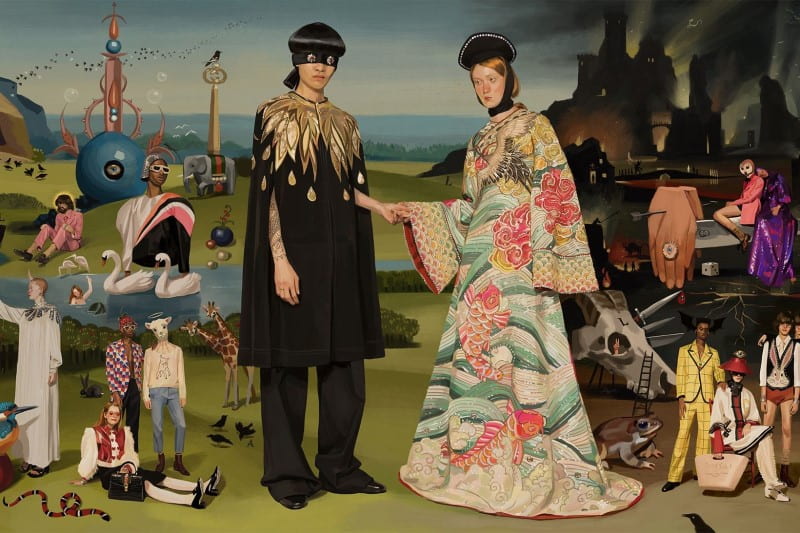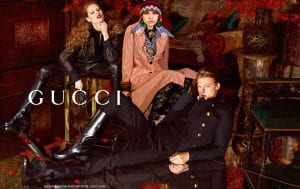Fashion Advertisement
Fashion advertisements have their unique way or modes that are stylistic in such a way that production and consumption is emphasized. They involve the interrelationship of image and word, among other important things. Several things have to be taken into account when making fashion advertisements. These are inclusive of changes in technology and social activities in the aspects of retailing and clothing, impacts of gender, class, politics of race, among others.
In the figure above, there are several bodies that have been used, while others which are important in fashion advertisement, have not ben used. Framing and language, action, gestures, and objects appear in the advertisement. Symbolism and cultural categories do not appear in the advertisement. Framing of the word “GUCCI” has been done well in that a person will be attracted to view the advertisement, and it directly gives an overview of what is being emphasized. The creator used the word to create an emotional frame that is positive for the product in the mind of the viewers. To add to that, the creator of the advertisement uses action. The creator uses the chance to use people that feel happy wearing the “GUCCI” brand to motivate the audience to take now take real steps in becoming a client. One will be attempted to try the brand to feel the same as the people used. Objects in an advertisement assist the business to form the desired image of a brand and brand personalities in the minds of the clients. The objects used in the advertisement are persuasive in stylish mode and gives a picture of how a customer will look like. “Design the clothes so that they make me feel young, but design them in a way so that I do not appear too young to others. (Caucasian make, aged fifty-six).”
The creator uses gesture in the advertisement. Every targeted customer will follow the eyes of the object used. This directs one to the “GUCCI” brand. Gestures play well in an advertisement, especially when placed in a good position in the advertisement. Symbolism does not appear in the advertisement. No symbols can be extracted from the advertisement. Similarly, no cultural categories reflected.
Work Cited
Bug, Peter, Laura Bessler, and Janina Bendix. “Fashion and Fashion Advertisement in TV—Study Germany.” In Fashion and Film, pp. 29-57. Springer, Singapore, 2020.
Choi, Tsan-Ming, and Na Liu. “Optimal advertisement budget allocation and coordination in luxury fashion supply chains with multiple brand-tier products.” Transportation Research Part E: Logistics and Transportation Review 130 (2019): 95-107.
Kaiser, Susan B. Fashion and cultural studies. A&C Black, 2012. Chapter 6.

